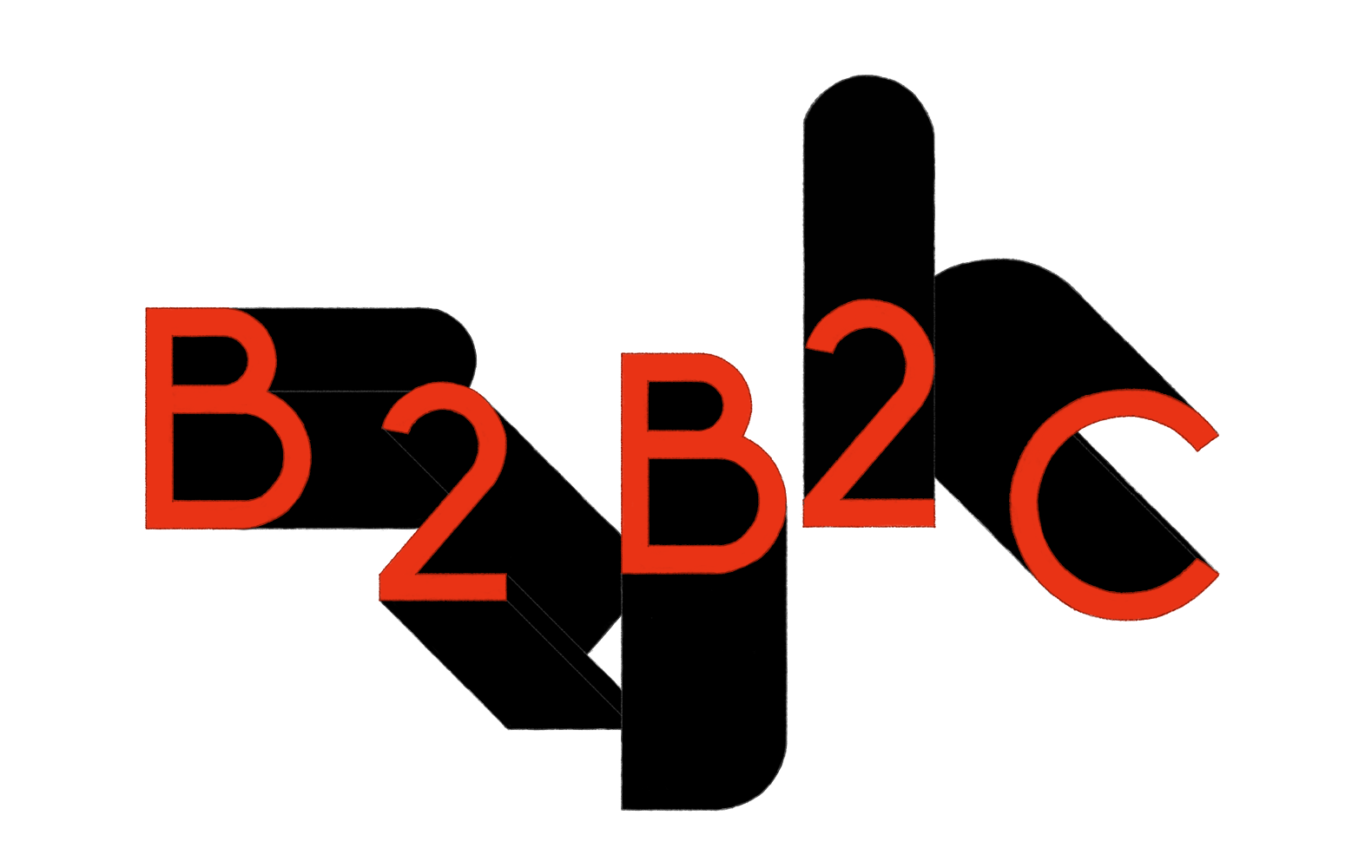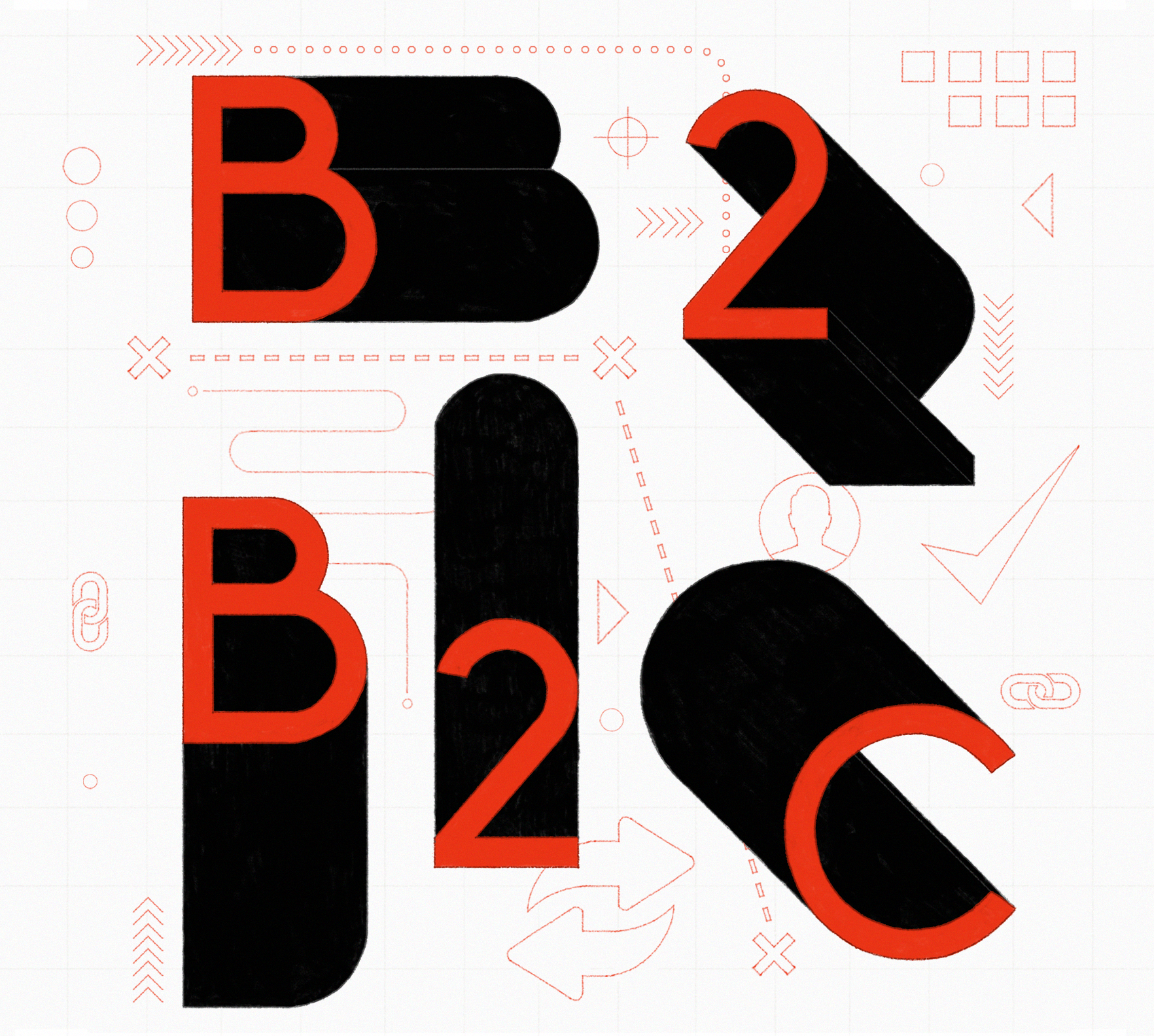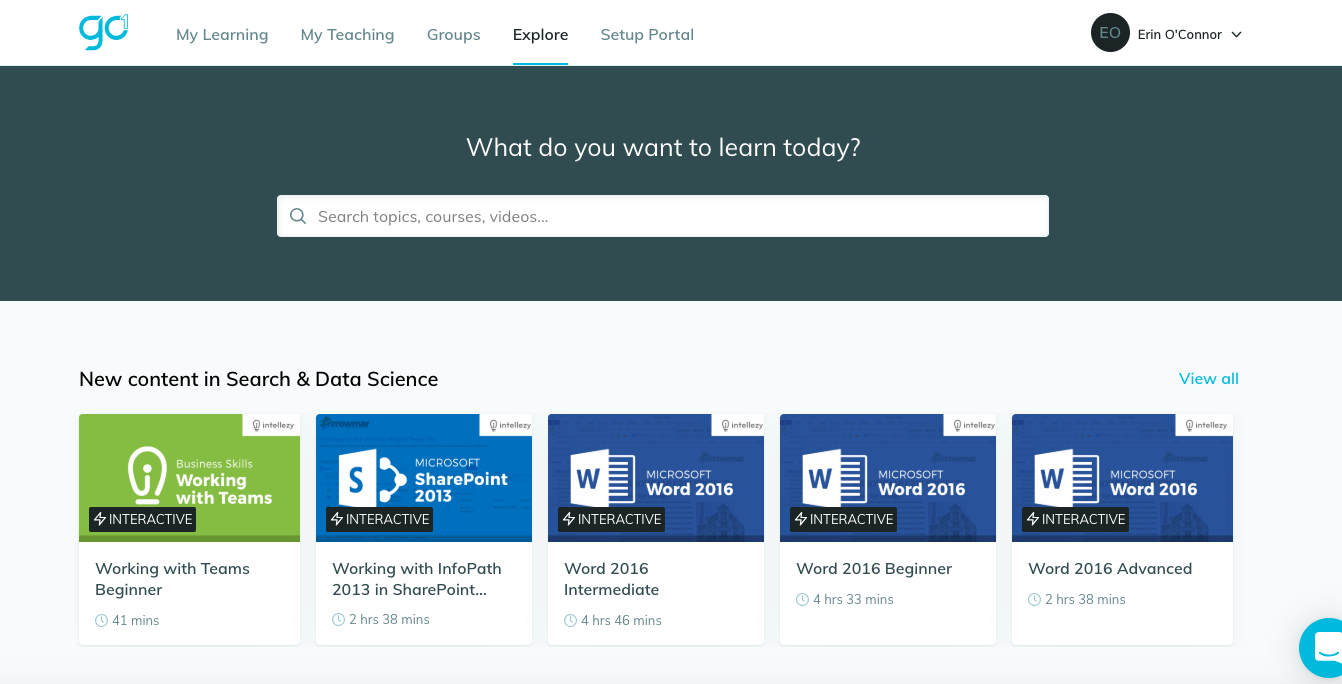Customer acquisition costs can make or break a business.
The more it costs to acquire a customer, the more value businesses have to get from that customer to make a profit. If the value of each customer is less than the money it takes to acquire them, no investor's wallet will be deep enough to sustain the company for the long term.
Some companies are turning to other businesses to acquire customers, developing business models that tie mutually beneficial links between the companies and their customers. In this model, called B2B2C, one business offers a service to a business that needs it, but the first business retains the customers it gains.
Grubhub, a popular delivery app, is an example. When you order your dinner through Grubhub, you can access dozens of restaurants in your local area. You're simultaneously the customer of Grubhub and whichever restaurant you choose. GrubHub didn't sell their product to the restaurant (B2B), nor did they make the food you're about to eat (B2C). This is the B2B2C business model in action.
B2B2C offers a compelling mix of B2B and B2C advantages to startups searching for product-market fit and to established companies looking to acquire new customers. When done right, it's win-win-win for both of the businesses and their customers.
What is B2B2C?
B2B2C describes a business model where your company sells a product or service to another business, which gets you access to customers you get to keep and use. Here are the key differentiators for B2B2C:
- Your business offers a horizontal solution to another business's problem.
- The other business's customers recognize that they're also your customers.

Take another look at Grubhub: It sells a horizontal feature to the restaurants around you. Many of them can't offer delivery, and most of them don't have the funds to build out a consumer-facing app—much less provide customer support for it.
If a restaurant partners with Grubhub, they get to offer their previous customers a new feature, potentially resulting in more orders and higher customer satisfaction. When Grubhub partners with a restaurant, they get access to those customers and can maintain that relationship as they order from other restaurants in other locations.
The B2B2C model is more than a mutually beneficial relationship between businesses: It requires that customers develop direct but separable relationships with both brands.
Your local grocery store didn't form a B2B2C relationship with Coca-Cola to sell soda. This is a vendor relationship: Coca-Cola sells their product at wholesale to another business, which sells it to you for a marked-up price; Coca-Cola doesn't sell soda to you directly.
Another easy-to-mix-up B2B relationship is white labeling. Take Bread, for example. Bread offers a white-labeled product for stores that want to offer financing. You might notice a horizontal value here. But the nature of a white-label relationship is that customers don't know they're using Bread; they just know there's a new button when they check out.
In a true B2B2C deal, the business you're selling to gets a problem solved, and your business gets access to a new customer base that isn't fixed to the prior business.
Why B2B2C can create strategic customer growth
B2B2C deals combine two of the best features from B2C and B2B models: network effects and predictable growth plans.
If you acquire entire customer bases through B2B2C deals, you can use that data to fuel further acquisition and iteration. The more you know about your customers, the better you can find them and serve them.
Network effects are typically the domain of B2C companies — Facebook and Google being prime examples. Unfortunately for other B2C companies, network effects have discouraging, downstream influences. Google's product improves as it acquires users, which means that any Google competitors have to find ways to improve their product without the same access to feedback.
With a B2B2C model, you can get around some of those effects. Each B2B2C deal offers you customers and data, but you can build on those network effects in chunks rather than drips. With this kind of acquisition, you can plan for network effects.
OpenTable, a B2B2C company that offers online reservations with restaurants, builds network effects into its email marketing. Initial user acquisition typically starts with users seeking a reservation to a local restaurant, but once users join the service, they get restaurant recommendations tailored to them based on users in their area.
With network effects providing a tailwind, OpenTable's horizontal service shows users that they're now OpenTable customers and that there's value in being an active participant in the service.
By making deals with businesses instead of navigating waves of consumer trends, you can also make a more predictable, long-term growth plan.
Hero, another company with a B2B2C business model, has this planning potential. Hero enables retail employees in physical stores to connect with online shoppers through chat and live video.
Hero provides a digital layer for physical retailers. That way, physical retailers can still interact with online consumers by showing them products and sharing information.
Instead of acquiring users directly, Hero can chart its growth against a much smaller selection of stores and chains.
This growth plan is advantageous because B2B companies tend to have less churn than B2C companies. Consumers have a wide variety of services to turn to, and might churn because they lose interest, find a better product, or decide they could no longer afford it. B2B companies try to solve business problems, so client interest isn't as likely to wane and there might not be many alternatives if the market is niche.
With B2B sales, you can focus on building a sales team that pursues and maintains fewer, but larger, accounts. As each B2B client offers a group of customers, you can still get the data that cultivates successful B2C growth.
A B2B2C company can iterate its service with each customer but plan its growth with each client.
B2B2C customers need identity infrastructure
B2B2C business models rely on an infrastructure that enables cross-platform user management. With white-labeled identity infrastructure from Auth0, you can make authentication seamless and secure so that customers can focus on using and enjoying your product.
Single Sign On (SSO)
Asking users to remember another set of credentials is a big request. According to a Digital Guardian survey, nearly a third of users already have too many password-protected credentials to count. If they're trying your service out for the first time, you don’t want to create friction.
Look at the identity needs of a company like GO1, for instance. GO1 is a B2B2C company that works with learning management system providers to build a repository of compliance and professional development content. With one subscription, end-users get access to this volume of valuable content, and businesses can better enable employee growth.
Seamless authentication is key for this level of engagement. Self-development isn’t always easy, and users facing a login screen every time they want to view a resource or test a new module could make the experience even harder. GO1’s long-term success rests on consistently showing users the value of new knowledge and making it simple for them to pursue it.
Single Sign On (SSO) enables users to log in with one set of credentials — and stay logged in — creating a seamless experience that lets the GO1 product shine through.
As GO1 expands to new use cases, such as enabling job search companies to prompt their applicants to complete training via GO1 before applying, the authentication experience becomes even more important. Expansion requires integrating with different authentication protocols, such as SAML and LDAP. An outsourced identity provider can help you consistently scale a high-level authentication experience without consuming your developer resources.
Security and Privacy
A B2B2C business model also relies on the ability to safely manage users.
If you want to sell another business on your service, the advantages of that deal need to outweigh the risk associated with introducing a third party. The network effects that make a B2B2C deal valuable depend on data, so your customers need to be able to trust you with that data.
Since B2B2C typically involves one business positioning its service as an add-on to another business's service, a data breach can be especially dangerous. Users are already getting value from the main service, so if your security practices develop a poor reputation, you'll be easy to avoid. And if the data breach is high profile, the main business might drop your service to keep its users safe.
Auth0 is a trusted, vetted identity provider, as proven by our adherence to best-in-class compliance frameworks. By offering robust security features, you can demonstrate to users, and the business offering them to you, that you can treat their data with care.
Counterintuitively, adding security also grants you the opportunity to learn more about your users. Auth0 offers progressive profiling tools so that you can learn more about your customers over time. Rather than barrage them with questions all at once, you can get different bits of information every time they log in: their name the first time, their address the second, their industry the third, and so on.
Security can bolster, not slow down, your network effects.
Branding and White Labeling
An essential feature of a successful B2B2C relationship is that your newly acquired customers actually identify as your customers. If your brand name merely flashes by as customers proceed with their normal flows, then you're not getting the full value of the B2B2C deal.
The B2B2C relationship is already fairly complex, and customers are liable to confuse which business they need to contact for support in different contexts. If you can white label any of the supporting infrastructures you need to manage users, your relationship with them will be simpler.
With Auth0's Guardian, you can build a multi-factor authentication application that matches your brand's look and feel. Combined with an extensive JavaScript library, you can further customize Guardian to your specific needs.
Branding is powerful, and with the right tools, your customers are better able to see your service and remember its value.
Is your business right for B2B2C?
B2B2C relies on aligned incentives and on businesses that can maintain that alignment.
The business you're selling to has to want another brand involved, not just your service or solution. If that business only wants a new feature, a true B2B2C deal will be difficult to strike and hard to maintain.
Look for these deals by pursuing companies that already offer a range of services or products. They'll likely be more open to adding yours to their portfolio. If you come into the deal with a well-run customer success team, you can pitch that support. The less that business has to worry about the problems your solution might introduce for their customers, the better.
B2B2C can be your core business model, or it can be a growth stage. Uber started as a digital, on-demand cab service; now it offers delivery at scale through Uber Eats. Instacart started as a grocery delivery service, but there's speculation it might pivot to B2C by leveraging user data to open its own grocery stores.
To strike a B2B2C deal, your service has to offer horizontal value. To succeed with a B2B2C deal, new users have to identify as your customers.
Getting the deal depends on a good sales team and the right product alignment. Succeeding with the deal depends on supporting users with the right identity infrastructure and the best authentication experience.
About Auth0
Auth0 by Okta takes a modern approach to customer identity and enables organizations to provide secure access to any application, for any user. Auth0 is a highly customizable platform that is as simple as development teams want, and as flexible as they need. Safeguarding billions of login transactions each month, Auth0 delivers convenience, privacy, and security so customers can focus on innovation. For more information, visit https://auth0.com.








